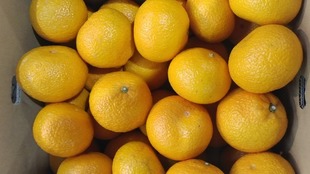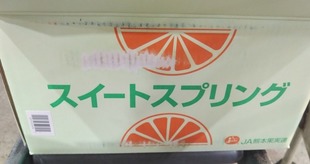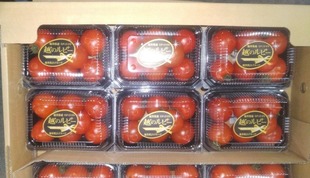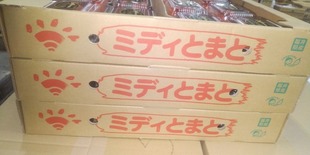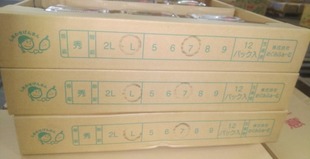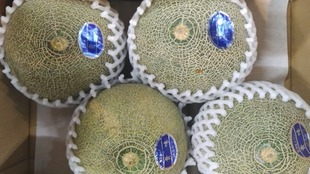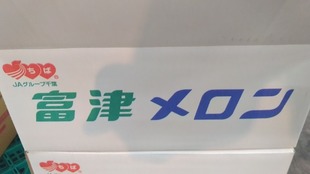【Product name】
ONION
【Type】
Allium cepa L.
【Within the jurisdiction】
Iwamizawa City, Hokkaido, Mikasa City (JA Iwamizawa)
【Origin of name】
In Japan, the ancient Chinese “蔥头: Allium cepa” was read as “onion”. It is attached from the scallion of the “بَصَل” sphere. The Latin word “union” is the English name for onions.
【Major features】
Prolonged corona sickness (The spread of vaccination is wonderful, but the government is about to take concrete measures. Children and students who cannot go out, learning motivation, adults’ frequent economic situation, job change support, etc. A society where corona coexists If not launched early, an unusually large number of people will choose to commit suicide due to stress-induced depression and withdrawal from the competition for survival over epidemic deaths. I would like to ask for a wide range of support measures, not just in some industries.) The restaurant industry in Hokkaido has been greatly affected by shortened business hours and refraining from providing alcohol. I heard that many businesses in Sapporo have introduced kitchen cars not only to make it possible to take out regular menus at stores, but also to cover the number of visitors to stores that have decreased due to the corona damage. Amidst a wide range of food trucks such as curry, Hokkaido Style Deep-fried Chicken, and Fish shaped cake with filling inside, the Clean House Group (Iwamizawa City) was launched in April 2021 in Nopporo Town, Ebetsu City as a new pillar of food and drink after ramen. It seems that the “kitchen car Mibi grilled chicken” that opened in the industry is attracting attention from inside and outside the industry. JA Iwamizawa merged 5JA such as former JA Iwamizawa City in 1993, covering the northeastern part of Sapporo City, Iwamizawa City in the central part of Ishikari Plain, Mikasa City, etc. (JA Kurisawa(Yamu o Nai)Town merged in 2001) Established. The area within the JA jurisdiction is the middle reaches of the Ishikari River, a paddy field that represents Hokkaido, and rice is the largest agricultural product. Due to the conversion of paddy fields in the 1970s, the production of onions and other horticultural items has become popular. Onions are the second largest agricultural product after rice. Cost and shipping lot are the main factors in selecting onion transportation means at JA. Transportation costs are the number one factor in choosing a means of transportation. However, since the transportation companies also set prices while looking at the situation of competing other industries, it seems that there will be no significant price difference between trucks and railroads. It seems that the means of transportation that are superior in terms of price differ depending on the destination. Generally, it is said that the longer the distance, the higher the price advantage of the railway, and although it depends on the size of the truck, the turning point is about 300 to 500 km. However, in reality, various factors affect the cost, so it seems that it is not possible to compare superiority or inferiority only by distance. Rail transportation does not mean that the entire process from the production area to the market is transported by rail, but by truck from the production area to the nearest freight station and from the nearest freight station in the wholesale market. The transportation cost in this case is greatly affected by the transportation distance by truck, and it seems that the shorter the distance, the lower the cost. It seems that the same thing can be said for truck transportation. Even when transporting from Hokkaido to prefectures, you can take a ferry at a port in Hokkaido and arrive at a port somewhere in the prefecture, so it seems that trucks are not running the entire process. It seems that the transportation cost greatly depends on the transportation distance by truck to the port of loading and the port of loading and unloading. In addition, it seems that the price advantage of rail transportation will increase for transportation to the wholesale market near the freight station, and the price advantage of truck transportation will increase for transportation to the wholesale market near the port of loading and unloading. In the west of Kinki, only Tsuruga has regular ferry services that are easy to use from Hokkaido, so the distance from the port to the wholesale market will be longer, and rail transportation will be advantageous. Also in Hokkaido, Iwamizawa, which is close to Tomakomai, which is the main shipping port, has a high relative advantage of truck transportation, and in the Kitami area and Furano area, which are far from Tomakomai, the relative advantage of rail transportation seems to increase. Another factor that influences the choice of transportation method is the size of the lot for each shipping destination. It seems that the main body of truck transportation is a 20-ton trailer with a large load capacity. This is because the larger the load capacity, the lower the transportation cost. In other words, a truck with a small load capacity has a cost disadvantage. Therefore, for shipping destinations where the amount of one shipment is less than 20 tons, it is necessary to take measures such as mixed loading and unloading at multiple locations, which seems to reduce efficiency and raise costs. On the other hand, in rail transportation, 5 ton containers are the main products, so if there is a shipment volume of 5 tons or more, the cost will not change much. Therefore, it seems that the price advantage of rail transportation will increase when shipping to the wholesale market, which cannot accept onions of more than 20 tons per day. As of 2015, it goes without saying that Hokkaido is the main production area that produces about 60% of Japan’s onions. Among them, the Sorachi area(The total area is about 5792 km2, and the location is between Sapporo and Asahikawa. Near New Chitose Airport.)centered on the JA Iwamizawa area is the third onion producing area after the Kitami area and Furano area. About 10 years ago, in 2012, the JA’s onion production status was 205 houses, a planted area of 1241 hectares, and a production volume of 32,214 tons. The crop was poor in 2012, and the annual production in recent years has been around 30,000 to 40,000 tons. Harvesting of onions begins in August, is stored in the JA warehouse, sorted and prepared at the fruit sorting plant, and shipped until mid-April the following year. 90% of the JA onions were shipped outside Hokkaido under the brand name “Maruiwa: ○いわ”. Of these, Tohoku and Kanto occupy 60 to 70%, and the rest seems to be west. All shipments are through the wholesale market, and it seems that there are 15 to 20 markets. However, in some shipments to processors, the quantity is sent directly to the actual consumer. The basic packaging is a 20 kg cardboard box, some of which are 5 kg and 10 kg of cardboard boxes, and some of which are shipped online for processing. Regarding the modal shift from truck transportation to rail container transportation, which has been promoted in the midst of the need to respond to international environmental problems (global warming), which has been said and debated recently, so far. Although it has not progressed easily, it is necessary to tackle it in earnest due to the recent rise in fuel prices and the shortage of drivers. A modal shift(It refers to switching freight transportation carried out by automobiles such as trucks to transportation means with a lower environmental load. Railways and ships are the main means of transportation with low environmental impact. Shifting what was previously carried by truck to be carried by rail or ship. Rail transport has played a major role in postwar reconstruction and high economic growth, but in the latter half of the 1960s, rail transport gradually slowed down due to the progress of motorization and the influence of the Japanese National Railways strike. Most of the transportation by truck has come to be carried out. However, it is said to be useful not only for CO2 reduction but also for solving problems in the logistics industry. However, although it is an expected initiative, there are many situations where it is difficult to proceed. Specifically, the environmental load is reduced by shifting some sections during long-distance transportation from trucks with high CO2 emissions to railways and ships with low CO2 emissions. It appeared in the 1980s as an energy saving measure, and in 1991, the Ministry of Transport (currently the Ministry of Land, Infrastructure, Transport and Tourism) recommended that it be promoted as a measure against labor shortages in the logistics industry. Then, in 1997, a joint meeting of the relevant councils on domestic measures against global warming decided to raise the modal shift rate from 40% to 50% by 2010. However, it did not progress as expected, and it seems that the figures have not been released since 2006. In recent years, it has been attracting attention from the perspective of SDGs. In addition, since the moving distance of the truck is shortened, efficient transportation becomes possible. This is one of the useful measures in the logistics industry, which has a problem of driver shortage. Joint Session of the Joint Session of the United States Council on Domestic Countermeasures against Global Warming (7th) Summary, Date: March 15, 1999 (Monday) 8: 00-10: 00 2. Place: Prime Minister’s Office 3. Attendees: (Committee) Chairman Jiro Kondo, Deputy Chairman Yoichi Kaya, Hiroshi Araki, Takashi Imai, Keiko Kiyohara, Mitsuo Kono, Keihiko Sasaki, Takamitsu Sawa, Takeo Shiina, Ikuro Takagi, Hideo Nakamura, Yo Matsuo, Koichi Mizuguchi, Mori Akio Shima, Hatsuko Yoshioka (Government side) Deputy Chief Cabinet Secretary Furukawa, Deputy Chief Cabinet Secretary Takeshima, etc. Excerpt: The Kyoto Protocol adopted at the Kyoto Conference on Global Warming Prevention in December 1997 set a strict goal of reducing Japan by 6%. In response to this, in June 1998, the Global Warming Countermeasures Promotion Headquarters urgently decided on promotion measures as the Global Warming Countermeasures Promotion Charter toward 2010, and while ensuring close cooperation with the relevant ministries and agencies, We are working to promote concrete and effective measures. Internationally, at the Buenos Aires (Argentina) conference in November last year, an action plan was formulated that set the work schedule for future international negotiations, and movements are underway toward the steady implementation of the Kyoto Protocol. For Japan, it will be a tough challenge to further improve the energy efficiency, which is already at the highest level in the world, and to make a major overhaul of the conventional lifestyle. I think I have to. The Global Warming Countermeasures Promotion Law and the revised Energy Conservation Law are scheduled to come into effect next month. National discussions are also underway at the “National Conference on Global Warm Environment and Daylight Saving Time,” which the relevant ministries and agencies have been working on in cooperation. In addition, various efforts are being made by related ministries and agencies based on the Global Warming Countermeasures Promotion Charter. From the general public’s point of view, it is ideologically understood that the international importance of global warming is important or that it is very important for the environment in which we live on the earth to continue for a long time to our descendants. From the actual feeling of life, we have to recognize that our lives are really living and lifestyles that go against energy saving and environmental protection. The most important initiative is to review lifestyles, and unless each of us citizens reconsider their own way of life, it is effective that each ministry and agency cooperates with each private sector or organization. I feel I don’t have it. It is said that they will work on the introduction of daylight saving time in a positive direction, but I think that this kind of thing is quite effective for the people as a shock therapy. Whether or not it will really be a countermeasure against global warming may not have a significant effect even if daylight saving time is introduced, but it may be an opportunity for the people to tackle it as their own problem. Regarding “telework”, we are making experimental efforts in the academic research city of Kansai, but it is a very big theme that the way of working must change in order to change the way of living. We will change the way we work so that we will not work unless we experience long commuting hours. If the way of working changes, the way of living also changes. If you start working at home, you will be able to curb your spending without wasting energy as you are now, and you will be re-questioning the meaning of actually working and living. It is also important that daylight saving time and telework provide many opportunities for each of us to review our lifestyle. A study group has been set up within the Forestry Agency to discuss global warming. Also, in the report on the basic direction of forest administration issued by the Mr. Hayashi Political Council two years ago, the idea centered on the wide-area function of forests is set out. These points are well incorporated into the Global Warming Countermeasures Promotion Charter. It seems that a positive understanding of the role of forests in the prevention of global warming has been obtained. There is an idea that forest resources should be resource-saving, but even if they are used, they should be accumulated. For example, in the case of a house, if wood resources are accumulated in the form of a house, carbon will not be emitted. The concept of accumulation that the resources created are accumulated at the same time that the forest actually grows and absorbs carbon is very important. We must consider measures for accumulation and social systems. Regarding tree planting, there are domestic tree planting and overseas tree planting, but in domestic tree planting, it is important to plant trees on flat ground at the same time as planting trees in the mountains. For example, road fences used to be planted with trees. It may be argued that planting trees on level ground can increase absorption by 0.1%, but it also has positive technical and methodical implications. To that end, cooperation between the Ministry of Construction and the Forestry Agency is extremely important. The idea of biomass power generation is also important. This is specifically implemented in Sweden and other countries, and has a kind of side effect of increasing employment and using unused resources. However, since the scale is not large, it is important to cooperate with related ministries and agencies including local governments. COP3 (The 3rd Conference of the Parties to the United Nations Climate Change Conference was held in December 1997 at the Kyoto International Conference Center in Kyoto City, Kyoto Prefecture, Japan, and mainly formed an international consensus on greenhouse gas emission regulations. Before the purpose of the international conference), discussions focused on the demand side and reduction measures, but I am grateful that the supply side perspective has been incorporated this time. The most important thing is how to cherish the location of the power supply. There are many discussions that the location of power sources is sacrificed to urban and consumers, and the current situation is that they are receiving opposition from local residents. On the other hand, in the city, he is indifferent to the location of power sources. In particular, there are strong expectations for infrastructure development, and there are very strong expectations for roads, ports, and even railways. It is difficult for the business operator or the Ministry of International Trade and Industry to solve the problem, and the Ministry of Transport has taken measures according to the Three Power Supply Laws. The “Environmental Agency DATA” shows changes in CO2 emissions only until 1996. Is this statistic officially released as a government agency statistic, or is it a figure estimated by the Environment Agency? There was a considerable gap between the figures from the Energy Metrics and Analysis Center of the Institute of Energy Economics and this. It feels like it’s getting a little closer recently, but it’s a problem if we don’t know if we’ve actually achieved it in the future, especially in 2012, until two years have passed. How much breaking news can be secured in the future? How do you make this official? How much should we read about the expansion and new construction of nuclear power plants in the materials of the Ministry of International Trade and Industry by 2010? Also, regarding the Ministry of Transport, “modal shift”, especially the shift of freight from trucks to railroads, is very important, but what are the measures to promote it? The current situation is that the total is delayed because the statistics of each ministry of the Environment Agency are added up. etc.)to switch from trucks to a transportation system centered on mass transportation means such as railroads for the purpose of reducing the environmental burden has been a long-standing issue in Japan’s logistics system. The same is true for the transportation of vegetables, which has relied heavily on truck transportation. There may be little objection to the modal shift as a general remark at that time, but it seems that the modal shift has not progressed slowly because there are various problems to be solved in order to actually proceed. However, truck transportation, which has become the main logistics entity in Japan, is in a difficult situation due to soaring fuel prices and a serious shortage of drivers, and modal shift is a more realistic issue. It has become. This is an unavoidable issue, especially in remote vegetable-producing areas where the transportation distance to the consumption area is long. The JA has traditionally transported a certain amount by rail, but it seems that it is increasing the ratio of rail transport by using a national subsidy project in FY2013. From a social point of view, the biggest factor that requires a modal shift is environmental problems. Global warming is one of the serious problems on a global scale, and the reduction of greenhouse gases such as carbon dioxide is an unavoidable issue in Japan as well. The transportation sector accounts for 20% of the carbon dioxide emissions in Japan, of which about 40% seems to be freight transportation. In other words, freight transportation accounts for 8% of Japan’s total carbon dioxide emissions, and the transportation sector is one of the important sectors for reducing carbon dioxide emissions. In the freight transportation sector, 85.8% of energy consumption comes from truck transportation. This is because Japan’s freight transportation is overwhelmingly dependent on truck transportation, and truck transportation is an energy-intensive means of transportation. Comparing the carbon dioxide emissions per unit transportation volume by transportation means, trucks are about eight times as large as railways and about four times as large as ships, and are transportation means with high carbon dioxide emissions. Truck transportation has accounted for a large proportion of Japan’s logistics so far, and in order to reduce carbon dioxide emissions in the transportation sector, it is a challenge to reduce the ratio of truck transportation and switch to railroads and ships. Will be. Reducing the environmental burden is an issue that should be tackled by the whole country as a social issue, but it is difficult for individual businesses to proceed to the point where management efficiency such as cost is greatly impaired. That is one of the reasons why modal shift has not progressed so far. However, even from a management perspective, there is a situation in which shippers should consider modal shift. First, the cost of truck transportation has risen due to soaring fuel prices. Crude oil prices have been declining since the end of 2014, but it is undeniable that they may remain at a high level as a long-term trend. In 2014, truck transportation costs are expected to rise by about 20 to 30%. Under the market conditions surrounding vegetables in recent years, it is not easy to pass on the increase in costs to prices, so the increase in transportation costs is particularly serious for remote production areas where transportation costs account for a large proportion. Secondly, it is becoming difficult to secure as many trucks as needed due to a shortage of drivers. It was also predicted that there will be a shortage of more than 100,000 truck drivers in Japan as a whole in 2020. One of the causes of the shortage of truck drivers is harsh working conditions such as late-night work and long hours of restraint (the work style reform-related law that came into effect in April 2019, and one of the highlights of the law revision is overtime work. Upper limit regulation. For some occupations including the driver industry, a five-year grace period was given due to special business circumstances, but from April 1, 2024, overtime hours in the transportation industry are 960 hours per year. Upper limit. Upper limit of overtime work (excluding holiday work) Principle, 45 hours per month, 360 hours per year, 45 hours per month can be exceeded up to 6 months per year. Overtime work: 720 hours or less per year, overtime work + holiday work: less than 100 hours per month, average of 80 hours or less for 2 to 6 months). At that time, the absolute number was on a downward trend due to the economic recovery. In addition, it seems that the penal provisions for violations of laws and regulations of carriers have been strengthened due to the frequent occurrence of serious accidents caused by trucks and buses due to illegal operation management. Overloading and long-term continuous operation of drivers are no longer allowed, and the number of trucks and drivers required for the same cargo volume has increased accordingly. As a problem before transportation costs, it is beginning to be feared that if we rely on truck transportation, we may not be able to transport vegetables to the consumption area. It is difficult to secure truck transportation for Japan’s logistics as a whole, but it is even more difficult for vegetables due to the characteristics of the logistics. First, pallets are rarely used for vegetables, and loading and unloading are manual tasks, which increases the burden. Secondly, in many vegetable producing areas, shipments are seasonal and it is not possible to secure a stable cargo throughout the year. Thirdly, the fact that the wholesale market often asks for delivery at midnight is also a factor that is disliked in terms of improving the working conditions of drivers. Until now, truck transportation has been accompanied by a high environmental load while relying on low fuel prices and overwork. Reducing the environmental burden has become a global issue, and the conditions for both low fuel prices and overwork are being lost. The sustainability of truck transportation is swaying, and modal shift is an issue that should be considered in earnest not only from the viewpoint of environmental issues but also from the management side of vegetable producing areas. Onions harvested by farmers are collected and stored in JA’s warehouse. It seems that they are sorted and boxed at a joint fruit sorting facility every day based on the shipping plan. It seems that the boxed onions will be loaded into a container for transportation at the joint fruit sorting facility. So far, there seems to be no difference in truck transportation. Empty containers are always carried in as the return cargo of trucks that carry shipments, and a certain amount is always available at the joint fruit sorting facility. The container loaded with onions seems to be transported by truck to the cargo terminal station in Sapporo. There used to be a freight station in Iwamizawa, but it seems that it is now abolished. Modal shift is easy to tackle for items that are storable, such as onions, and have a low risk of quality deterioration such as deterioration of freshness during the transportation process. Compared to that, modal shift with fresh vegetables such as lettuce and cucumber requires consideration for keeping freshness. Appropriate measures such as stable securing of cold storage containers are required. The location of the production area and market, and the transportation lot do not affect the management effect of modal shift. In general, the longer the distance, the higher the price advantage of rail transportation over truck transportation. However, since the transportation cost is affected not only by the distance but also by factors such as the distance from the freight station and the ferry port, it is necessary to consider the total transportation cost. As far as transportation from Hokkaido to the outside of Hokkaido is concerned, it is necessary to consider the limit of railway transportation capacity. Under the current freight train operation status, the additional transportation capacity is not large. There are 20 regular freight trains a day from Hokkaido to the outside of Hokkaido, but it seems that the maximum number of freight trains that can pass through the Seikan Tunnel is 23 a day. In addition, the maximum number of vehicles that can be connected to one flight is 20. There is also a limit to the newly increased transportation capacity. At present, it is practically difficult to switch all vegetables from Hokkaido to rail transportation. After preparing conditions for using transportation means that take the environmental load into consideration, the actual transportation method should be selected in consideration of the merits and demerits of the item and shipping destination, etc., and the ratio of truck transportation should be reduced as a whole to reduce the environmental load. It seems important to raise the ratio of excellent rail transportation in terms of health and safety. Yanmar Agri Japan Co., Ltd. (Headquarters location: Tsuruno Town, Kita Ward, Osaka, Umeda Gate Tower, Established: January 1, 2014) and JA Iwamizawa, Kagome Co., Ltd. (Founded 1899, Established 1949, Headquarters location: On September 2, 2021, Nishiki, Naka Ward, Nagoya City, Aichi Prefecture, signed a partnership agreement with the aim of promoting the expansion of processing tomato production areas within the JA jurisdiction. It seems that they are aiming to contribute to the promotion and development of regional agriculture by further promoting the expansion of the production area of tomatoes for processing through the cooperation of the three parties. Last fall, the area of tomatoes for domestic processing was 276 hectares, and the production area was mainly in the Kanto region, but it seems that the composition ratio of Tohoku and Hokkaido is expanding year by year. I hear that harvesting is the hardest part of growing tomatoes for processing. Kagome seems to have jointly developed a domestic processing tomato harvester with the Yanmar Group and is promoting mechanical harvesting especially in Hokkaido and Tohoku. Aiming to contribute to the expansion of the production area of processed tomatoes in JA Iwamizawa and the promotion and development of regional agriculture, the area of processed tomatoes in the JA Iwamizawa area will be tripled from 2021 by 2025. It seems that the goal is to expand to 30 hectares. As a means of doing so, we have established a cultivation system tailored to Iwamizawa by utilizing JA Iwamizawa’s agricultural base. By consolidating the production areas, it seems that the operation of harvesters and the efficiency of transportation will be improved. As the roles of the three famous people who support Japanese agriculture, the JA strives to acquire new producers and expand the scale in order to expand the cultivation area in the jurisdiction, and incorporates smart agriculture, irrigation equipment, and Sorachi-type crop rotation system into Iwamizawa. It seems that it will be responsible for establishing cultivation techniques that match the production area base and managing the harvesting and shipping schedules.
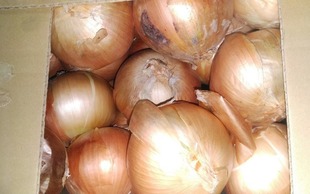
Certified by Hokkaido Clean Agricultural Promotion Association (Chuo Ward, Hokkaido): Sunflower green manure that takes into consideration soil preparation and landscape for compost application and subsequent crops (Sunflower uses insoluble phosphoric acid contained in the soil as the root acid discharged from the roots. It has the function of changing to soluble phosphoric acid and changing it to a property that can be absorbed by crops. Therefore, it is often used in volcanic ash soil and Hokkaido where H3PO4 is difficult to be absorbed due to low temperature. Suitable for green manure before cultivation of onions, fava bean, and pea) Reduced chemical fertilizers by introducing Phosphorus, and reduced the use of pesticides by timely control by predicting the outbreak of pests. Registration number 096-18-12, Registration date February 16, 2004 (2003), Producer group name, Iwamizawa Agricultural Cooperative Tamao Subcommittee, Agricultural Chemical Reduction Group, Collection and shipping management manager, JA Iwamizawa facility management Soil management: compost (onion, rice straw compost) 2t / 10a application, green manure planting (sunflower or wheat), organic (defatted bran) application, organic fertilizer application Do either, The lower limit of the nitrogen equivalent amount of the applied organic matter is 2Kg / 10a. Fertilization management: Appropriate fertilization based on soil diagnosis, control technology, and the use of insecticides, sterilizers, and herbicides to reduce the number of control times to 50% or less of the conventional method. Is based on the usage standard and should be within 15 times.
The number of herbicides should be within 15 times based on the usage standards.

It was 1871 that onions were cultivated for food for the first time in Japan. It seems to be around the age. Land development bureau, by Kiyotaka KURODA, Yellow Gloves (later Sapporoki ONION) William Penn, an onion seed called Yellow Danvers (later Senshuki ONION), was imported from the United States along with a machine and was cultivated on a trial basis. Brooks begins full-scale cultivation in Motomachi, Sapporo.
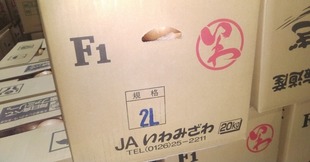
Inheritance is a phenomenon in which traits are transmitted from parent to child by reproduction, and chromosomes are responsible for the expression of genetic information and genes. Normally, there are two chromosomes in pairs, and humans have 46 chromosomes, and it seems that the number of chromosomes varies depending on the organism. The rule that only the dominant trait appears in the table when different information is inherited from the parent is called the dominant law. The dominant gene of the parents is expressed in the offspring. In this case, if the gene R that blooms red flowers predominates, all the offspring will bloom red flowers (to be exact, some white flowers will bloom with a low probability). The law of superiority or inferiority is, for example, crossing two pure line plants with allelomorphs. For example, when a purple flowering plant and a white flowering plant (parental generation) are crossed, all the offspring (first filial generation) will bloom purple flowers. Of the traits of flower color, when distinguishing between purple and white, each is called a trait. In Japanese, it seems that traits are often not distinguished. The first generation born by reproduction in this way is called F1. If you leave offspring after that, the next world is called F2. The F1 species is the opposite of the fixed species, and even if seeds collected from the grown strains are sown and raised, those with the same properties as the parents do not grow. F1 varieties are the most common varieties that have been bred and improved. Many of the varieties have been improved and made, so they are easy to grow, resistant to diseases, and have a good taste. However, even if they are cultivated by self-seeding, they do not grow with the same characteristics as their parents, so it seems that it is necessary to purchase new seeds in order to grow the same varieties every year.
